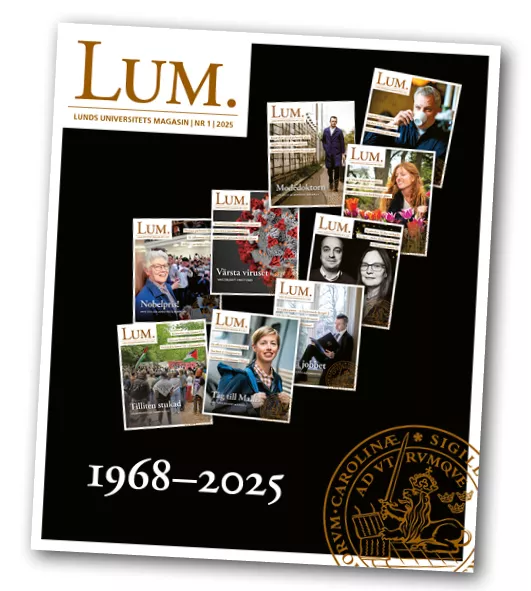Lying on a thin branch in the terrarium on Nathalie Feiner’s desk in the Department of Biology is a grey-speckled anolis lizard, looking out over the empty coffee cups, books and piles of scientific journals.
Back home, the native of Bavaria also has two gecko lizards, so having a pet at work is maybe not quite so odd. At least not for a researcher who has dedicated her career to these four-legged reptiles.
“Many people never get the chance to get close to lizards. If they do, it's impossible not to love them. They are also perfect for an evolutionary biologist as not much research has been done into them”, she explains.
The lizards have accompanied her a long time
The lizards have accompanied Nathalie Feiner ever since she began her academic journey at university in the southern German city of Konstanz. After taking her PhD she moved to Oxford in 2013 to continue her work on evolutionary biology, which is where she met her partner Tobias Uller, currently professor of evolutionary biology at LU, before beginning a research project into wall lizards.
“You could say the lizards brought us together. The first time we met I gave him one of my chameleons that he had promised to look after”, Feiner remembers with a smile.
Since 2015 she has been stationed in Lund where she mainly conducts research into anolis and wall lizards. Feiner wants to get to the root of this latter family of lizards and its evolutionary secrets. She was recently awarded a five-year grant worth SEK 15 million from the European Research Council as well as a prestigious starting grant from the Swedish Research Council to research more deeply into the wall lizards’ elusive genetics. Over five years she will build up a research team examining the parallel evolution of six different species of wall lizard in the Mediterranean region.
The reason why wall lizards are of interest is that they can vary to an incredible extent in appearance within the same species. While some are brown and plain, others can be colourful and spotted. This distinctive feature – which shows that evolution repeats itself time and time again across the millennia – is what Feiner now wants to look at more closely. By studying a specific cell type – neural crest – which forms in the early embryo, Feiner will make use of the Crispr-Cas9 gene-editing technology to solve the mystery surrounding the parallel evolution across the different species.
“In the long term, I hope my research can reveal how developmental biology sets the rules that determine what evolution can achieve”, she explains.
Feiner and her research team will travel to six locations in the Mediterranean region and collect wall lizards to study. A total of 600 specimens will be captured, from which half a centimetre of the tip of the tail will be removed and brought back to Sweden. This part – which regrows on the lizard – is sufficient to sequence the entire genome of each lizard. Furthermore, Feiner and her research team will capture around 60 lizards that will be brought back to the Department of Biology in Lund, where breeding colonies will be formed and studied over a long period.
How to catch lizards in the Mediterranean region
But how will these lizards be captured in a purely practical sense? Traps? Cages? Fishing-lines with fat earthworms? My final guess turns out to be fairly close to reality. The researchers will use long fishing-rods, but instead of a fishing line they will attach dental floss out of which they will make a small lasso on the end. Then it’s just a matter of training in how to get a “nibble”. These extremely fast-moving animals like stoney, hot environments, meaning churchyards are often great places to capture them.
“I remember one time I was creeping around a churchyard in a Tuscan mountain village with my fishing-rod, trying to be discreet so as not to provoke the people who were there mourning their loved ones. That said, capturing lizards is usually a good social asset, particularly with old Italian men who often have loads of capturing tips they used themselves as children”, explains Feiner.



